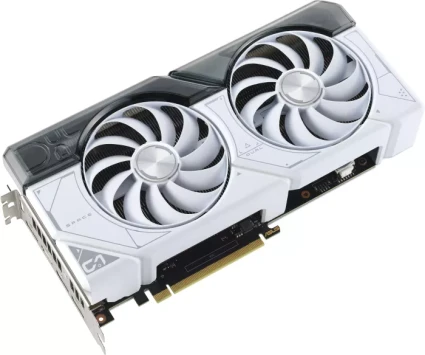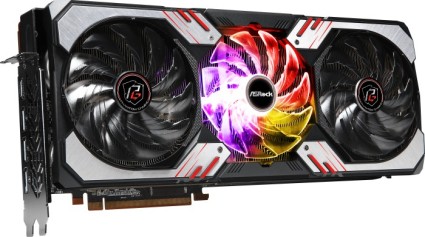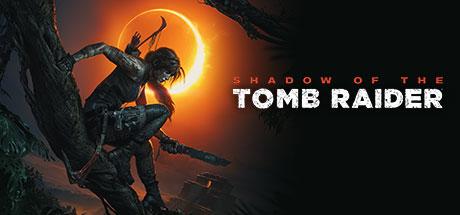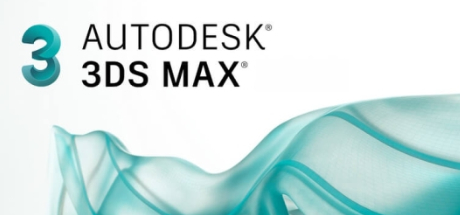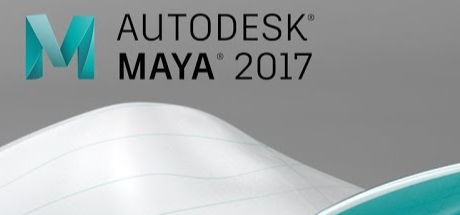
ASUS Dual RTX 4070 White OC vs. ASRock RX 6900 XT Phantom Gaming D OC
In diesem Vergleich von ASUS Dual RTX 4070 White OC versus ASRock RX 6900 XT Phantom Gaming D OC vergleichen wir die technischen Daten der beiden GPUs. Welche Grafikkarte ist schneller? Hier gibt es FPS & Benchmarks in Gaming und Anwendungen. Außerdem Daten zu Verbrauch, Effizienz (FPS pro Watt) und Preis-Leistung (FPS pro Euro).

Allgemeine Informationen
| Günstigster Preis |
|
|
| Hersteller | ASUS | ASRock |
| Serie | NVIDIA GeForce RTX 4070 - 12GB | AMD Radeon RX 6900 XT - 16GB |
| Chip-Architektur | Ada Lovelace (ab 2022/Q3) | RDNA 2 (ab 2020/Q4) |
| Chip-Bezeichnung | AD104-250-A1 / AD104-251-A1 | Navi 21 XTX |
| Fertigung | TSMC 5 nm "NVIDIA 4N" | TSMC 7 nm |
| Chip-Größe | 294 mm² | 520 mm² |
| Kühlung | 2x Axial-Lüfter (90mm) mit 0dB-Zero-Fan-Modus | 3x Axial-Lüfter (100mm) mit 0dB-Zero-Fan-Modus |
Spezifikationen
Die Anzahl der Recheneinheiten, die Taktraten sowie die Größe des Cache sind neben der zugrunde liegenden Architektur ein Indiz für die Leistungsfähigkeit eines Produkts. Die ASUS Dual RTX 4070 White OC verfügt über 5888 FP32-ALUs und hat damit deutlich mehr Recheneinheiten als die ASRock RX 6900 XT Phantom Gaming D OC mit 5120 FP32-ALUs. Der Boost-Takt der ASUS Dual RTX 4070 White OC liegt mit 2520 MHz etwas mehr als/wie bei der ASRock RX 6900 XT Phantom Gaming D OC mit 2340 MHz.
| Basis-Takt | 1920 GHz | 1925 GHz |
| Boost-Takt | 2520 GHz | 2340 GHz |
| Übertaktung | +75MHz Boost (OC-Profil) +45MHz Boost (Standard-Profil) |
+90MHz Boost +90MHz Game +100MHz Basis |
| Chip-Konfiguration | 46SM (5888SP / 184TMU / 64ROP) | 80CU (5120SP / 320TMU / 128ROP) |
| Rechenleistung | 30.03 TFLOPS (FP16), 30.03 TFLOPS (FP32), 0.47 TFLOPS (FP64) | 47.92 TFLOPS (FP16), 23.96 TFLOPS (FP32), 1.5 TFLOPS (FP64) |
Kompatibilität und Abmessungen
| Schnittstelle | PCIe 4.0 x16 | PCIe 4.0 x16 |
| Abmessung | 267,01 | 330 |
| Gesamthöhe | Triple Slot (2.56 Slots) | Triple Slot (2.8 Slots) |
| Bauform | PCIe-Karte (full height) | PCIe-Karte (full height) |
| Slotblende | full height | full height |
| Leistungsaufnahme (TDP) | 200W | 300W |
| Zusätzliche Stromanschlüsse | 1x 8-Pin PCIe | 3x 8-Pin PCIe |
Speicher
Die ASUS Dual RTX 4070 White OC verfügt über 12 GB GDDR6X Videospeicher, welcher an ein 192 Bit Speicherinterface angebunden ist und mit 21 Gbps taktet. Die Speicherbandbreite liegt damit bei 504 GB/s. Bei der ASRock RX 6900 XT Phantom Gaming D OC sind dagegen 16 GB GDDR6 VRAM mit einer Taktrate von 16 Gbps an einem 256 Bit Speicherinterface angeschlossen. Daraus resultiert eine Speicherbandbreite von 512 GB/s.
| Speicherkapazität | 12 GB | 16 GB |
| Speichertyp | GDDR6X | GDDR6 |
| Speicherinterface | 192 Bit | 256 Bit |
| Speichertakt | 21 Gbps (1313 MHz) | 16 Gbps (2000 MHz) |
| Speicherbandbreite | 504 GB/s | 512 GB/s |
Videoanschlüsse
| HDMI | 1x HDMI 2.1a | 1x HDMI 2.1 |
| DisplayPort | 3x DisplayPort 1.4a | 3x DisplayPort 1.4a |
Transcoding-Engine
| NVENC | 1x (8th Gen, max. Sessions: 8) | - |
| NVDEC | 1x (5th Gen) | - |
Encoding
| H.265 | ✓ (4K YUV 4:2:0 / 4K YUV 4:4:4 / 4K Lossless / 8K / HEVC 10bit support / HEVC B Frame support) | ✓ |
| H.264 | ✓ (YUV 4:2:0 / YUV 4:4:4 / Lossless) | ✓ |
Decoding
| AV1 | ✓ (8bit / 10bit) | ✓ |
| H.265 | ✓ (8bit 4:2:0 / 10bit 4:2:0 / 12bit 4:2:0 / 8bit 4:4:4 / 10bit 4:4:4 / 12bit 4:4:4) | ✓ |
| H.264 | ✓ | ✓ |
| VP9 | ✓ (8bit / 10bit / 12bit) | ✓ |
| VP8 | ✓ | - |
| VP8 | ✓ | ✓ |
| VP8 | ✓ | - |
| VP8 | ✓ | ✓ |
API-Unterstützung
| DirectX | 12 Ultimate (12_2) | 12 Ultimate (12_2) |
| CUDA | 8.9 | - |
| Vulkan | 1.3 | 1.3 |
| OpenCL | 3.0 | 2.1 |
| OpenGL | 4.6 | 4.6 |
| Shader Modell | 6.7 | 6.7 |
| Multi-GPU-Unterstützung | - | - |
Chip-Unterstützungen
| Raytracing | ✓ (3rd Gen NVIDIA RTX) | ✓ |
| NVIDIA Tensor | ✓ (4th Gen) | - |
| HDCP | 2.3 | 2.3 |
Sonstiges
| Einführung | 12.04.2023 | 28.10.2020 |
| Herstellergarantie | drei Jahre (Abwicklung über Händler) | zwei Jahre (Abwicklung über Händler) |
Spiele

- NVIDIA GeForce RTX 4070 - 12GBAVG100.00 %1%100.00 %
- AMD Radeon RX 6900 XT - 16GBAVG110.26 %1%105.16 %

- NVIDIA GeForce RTX 4070 - 12GBAVG54.3 FPS1%42.3 FPS
- AMD Radeon RX 6900 XT - 16GBAVG62.6 FPS1%46.9 FPS

- NVIDIA GeForce RTX 4070 - 12GBAVG149.1 FPS1%89.4 FPS
- AMD Radeon RX 6900 XT - 16GBAVG181.9 FPS1%109.1 FPS

- NVIDIA GeForce RTX 4070 - 12GBAVG526 FPS1%326.3 FPS
- AMD Radeon RX 6900 XT - 16GBAVG585.9 FPS1%287.3 FPS

- NVIDIA GeForce RTX 4070 - 12GBAVG85 FPS1%70.8 FPS
- AMD Radeon RX 6900 XT - 16GBAVG100.4 FPS1%83.6 FPS

- NVIDIA GeForce RTX 4070 - 12GBAVG177.1 FPS1%157.6 FPS
- AMD Radeon RX 6900 XT - 16GBAVG209.5 FPS1%180.1 FPS

- NVIDIA GeForce RTX 4070 - 12GBAVG179.7 FPS1%138.9 FPS
- AMD Radeon RX 6900 XT - 16GBAVG190.8 FPS1%136.3 FPS

- NVIDIA GeForce RTX 4070 - 12GBAVG129.2 FPS1%86.4 FPS
- AMD Radeon RX 6900 XT - 16GBAVG152.1 FPS1%89.5 FPS

- NVIDIA GeForce RTX 4070 - 12GBAVG180.5 FPS1%147.3 FPS
- AMD Radeon RX 6900 XT - 16GBAVG173.7 FPS1%139 FPS

- NVIDIA GeForce RTX 4070 - 12GBAVG74.1 FPS1%47.9 FPS
- AMD Radeon RX 6900 XT - 16GBAVG75.7 FPS1%49 FPS
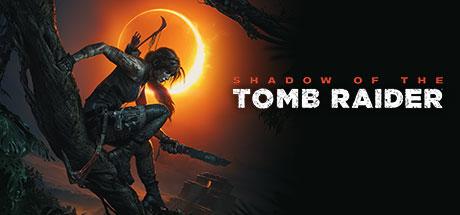
- NVIDIA GeForce RTX 4070 - 12GBAVG235 FPS1%165.8 FPS
- AMD Radeon RX 6900 XT - 16GBAVG237.7 FPS1%174.1 FPS

- NVIDIA GeForce RTX 4070 - 12GBAVG87.9 FPS1%67.5 FPS
- AMD Radeon RX 6900 XT - 16GBAVG92.1 FPS1%64.4 FPS

- NVIDIA GeForce RTX 4070 - 12GBAVG141.2 FPS1%111.4 FPS
- AMD Radeon RX 6900 XT - 16GBAVG155 FPS1%122.3 FPS

- NVIDIA GeForce RTX 4070 - 12GBAVG0.36 FPSAMD Radeon RX 6900 XT - 16GBAVG0.23 FPS
